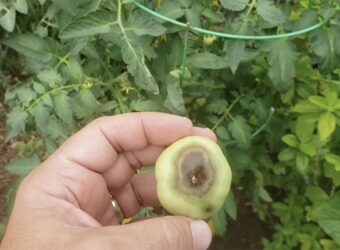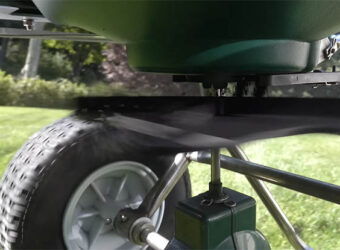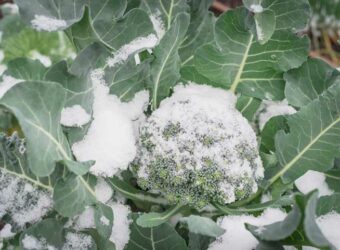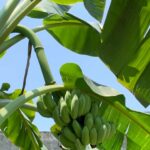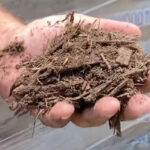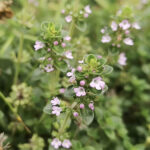The wrong fertilizer can cause as many problems as not fertilizing at all. With thousands of fertilizers available, choosing the right one fosyour plants can be confusing. This guide will explain when and how to use 10-20-10.
What Is 10-20-10 Fertilizer?
10-20-10 fertilizer has ten percent nitrogen, twenty percent phosphorous, and ten percent potassium. The balance of the ingredients are proprietary ingredients added to make the fertilizer easier for plants to absorb, fillers to make the fertilizer easier to spread, and things to keep the fertilizer from spoiling. The numbers on the front of the fertilizer bag are explained in more detail in this article.
Briefly, phosphorous helps plants convert sunlight into energy. Just as importantly, phosphorous triggers blooms and fruit set and works toward strong roots. Nitrogen is in every cell in a plant, so a lack of nitrogen causes stunted plants and few blooms. Potassium is important for creating the things the plant needs, such as starch, oils, and proteins, and overall plant health. Without potassium, a plant is weak and vulnerable to diseases and pests.
What Is 10-20-10 Fertilizer Used For?
10-20-10 is used primarily in vining vegetables to trigger blooms and fruit set and in bulbs and tubers.
Why Use 10-20-10?
10-20-10 is used when too much nitrogen will result in too much foliage at the expense of blooms and fruit set.
Types of Fertilizer
Fertilizers come in liquids, powders, and granules. Here are some things to think about when choosing which one you want to use.
Liquid Fertilizer
Ready-to-use liquids are sprayed or used to water plants without any mixing. Their convenience comes at a price, however. While less expensive than concentrates initially, ready-to-use liquids are more expensive per use. Concentrates are mixed with water to use. Liquids start to work immediately and last seven to fourteen days, depending on the fertilizer. I did not find a liquid 10-20-10 fertilizer.
Water Soluble Fertilizer
Some powders and granules are designed to be mixed with water and applied as a liquid. This is like using concentrates; you must mix them before applying. They work just like liquids once mixed.
Fertilizer for Hydroponics
Hydroponic systems grow plants without soil. All the nutrients the plant needs are given to the plant in a water solution. Liquid and water-soluble fertilizers work well in a hydroponic system.
Granular Fertilizer
Granular fertilizer is made of small granules that resemble small rocks. Some granular fertilizers are designed to be mixed into water and applied as liquids. Other granules are designed to be spread around the plants and mixed in the top two to three inches of soil, then watered.
Organic Fertilizer
Some fertilizers are made with only natural ingredients. However, fertilizers that claim to be organic have to submit their ingredients to a certifying agency such as the USDA and prove that they only use things allowed in organic gardening.
Slow-Release Fertilizer
Some granules are coated with a substance that gradually wears away over time. As the coating dissolves, it releases nutrients. Slow-release fertilizers start working in about seven days and work for several weeks or even months.
When and How Do I Apply 10-20-10 Fertilizer?
Always read and follow the label directions for how to apply fertilizer. Each fertilizer brand will have slightly different instructions for how to use the fertilizer. Here are some typical examples of how to use 10-20-10 fertilizer.
Houseplants
10-20-10 has too much phosphorous for most houseplants. While it will trigger blooms and early root growth, the high phosphorous content can be toxic. A more balanced fertilizer, such as a 10-10-10, is a better choice.
Annual Flowers
I would not use 10-20-10 for annual flowers for the same reason I would not use it for houseplants.
Ornamental Plants
Ornamental plants would do better with a more balanced fertilizer. The high amount of phosphorous could make them sick.
Bulbs and Tubers
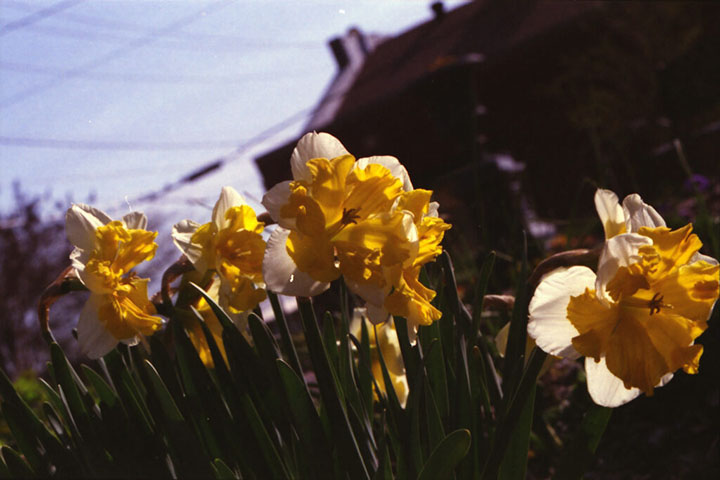
10-20-10 can be applied before planting bulbs or tubers. I spread the fertilizer on the bottom of the trench in which I am planting the bulbs and tubers, then cover it with an inch of dirt. I plant the bulbs and tubers over the dirt and cover up the trench.
Alternatively, I sprinkle the fertilizer around the bulbs and tubers after they come up and work it in the first two to three inches of soil. I then water the area.
Vegetable Gardens
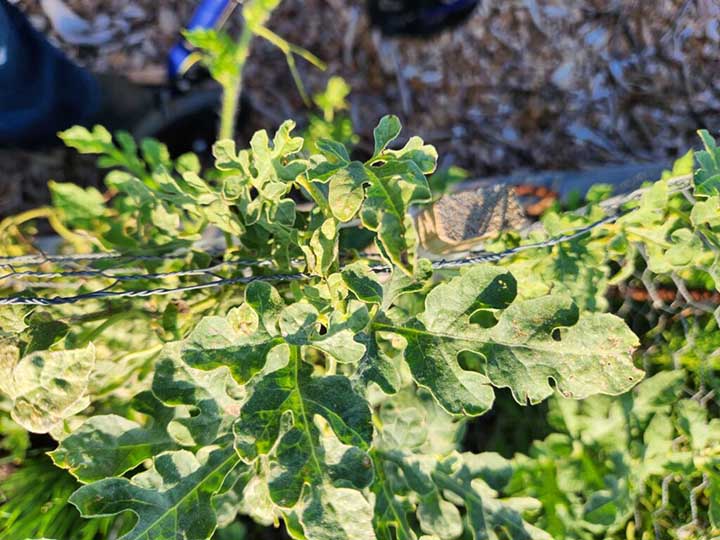
10-20-10 is good for cucumbers, melons, pumpkins and squash once they start blooming to promote blooms and fruit set. The lower level of nitrogen prevents the vine from growing too much foliage at the expense of blooms and food. The lower potassium level is enough to promote good, healthy plants. I sprinkle the area around my vines with about one cup per ten feet of row. I go ahead and sprinkle the fertilizer along the whole length of the vines, not just at the crowns. I then work the fertilizer into the top two to three inches of soil and water the area well.
When the blooms slow down and the fruit is growing, I switch to a fertilizer with more potassium and not so much phosphorus.
Read my article to know more detail about fertilizing your vegetable gardens.
Trees
I do not recommend 10-20-10 for trees because it has too much phosphorus.
Lawns
Lawns need more nitrogen than 10-20-10 gives them. A more balanced fertilizer is a better choice.
Where Do I Buy 10-20-10 Fertilizer?
I have found 10-20-10 fertilizer at Walmart, but not Lowe’s or Home Depot. Amazon and other online retailers carry 10-20-10 as well.
My Recommendations for 10-20-10 Fertilizer
I found three different formulations of 10-20-10. Here are the details of them.
Pennington Smart1 Feed Bulb and Bloom Fertilizer 10-20-10 is designed to be used on bulbs and tubers. It can be used when planting them or when the foliage comes up. Pennington Smart1 Feed Bulb and Bloom Fertilizer 10-20-10 is a granular fertilizer that shakes out of the container. The label states Pennington Smart1 Feed Bulb and Bloom Fertilizer 10-20-10 will not burn your plants and can last as long as eight months before needing to be reapplied.
Howard Johnson’s All-Purpose Fertilizer, 10-20-10 Formula is a no-frills fertilizer. The manufacturer does not provide any details about its use or ingredients online.
Ultimate Fertilizer LAWN/GARDEN 10-20-10 is formulated for soils in the central and western United States of America. It contains seventeen percent sulfur and six percent iron. This fertilizer will acidify the soil because of the large amount of sulfur in it.
What Are the Ingredients in 10-20-10 Fertilizer?
Typical ingredients are urea or ammonium nitrate for nitrogen, sulfate of potash and sulfate of potash magnesia for potassium, and greensand for phosphorus. Some derive nitrogen from feather meal or chicken meal. Non-organic fertilizers may use sewage sludge as a source of nitrogen. Each manufacturer typically includes proprietary ingredients to make the nutrients easier for the plants to absorb. Slow-release fertilizers include the coating on the granules. The rest of the ingredients are fillers to make the fertilizer easier to spread and ingredients to keep the fertilizer from spoiling.
Frequently Asked Questions
Is 15-30-15 fertilizer the same as 10-20-10?
No, 15-30-15 has the same proportion of nitrogen, phosphorous, and potassium, but they make up a larger portion of the fertilizer in the bag than 10-20-10. This means 15-30-15 is stronger than 10-20-10.
What is the difference between 10-20-10 fertilizer and 0-46-0?
10-20-10 has nitrogen, phosphorous, and potassium. 0-46-0 is just phosphorous and is very strong. You will have to be very careful not to burn your plants if you use 0-46-0, and it would be a supplement, not the only fertilizer you use.
How long does it take 10-20-10 to work?
The slow-release form takes about seven days to start working. Immediate-release granules start working as soon as they are watered.
How long does 10-20-10 fertilizer last?
That depends on the type of fertilizer you buy. One brand of granules says it lasts up to eight months.
Are all 10-20-10 fertilizers the same?
No, each manufacturer has a unique mix of ingredients. Each brand has ten percent nitrogen, twenty percent phosphorous, and ten percent potassium by weight. The exact mix of ingredients each manufacturer uses to get that, and the other things the manufacturer includes, differ by brand.
In conclusion, 10-20-10 fertilizer is used primarily for bulbs and tubers and vining vegetables. I found three brands of 10-20-10 fertilizer, including a slow-release formulation that lasts up to eight months. 10-20-10 is a good niche fertilizer but does not have very many uses.
